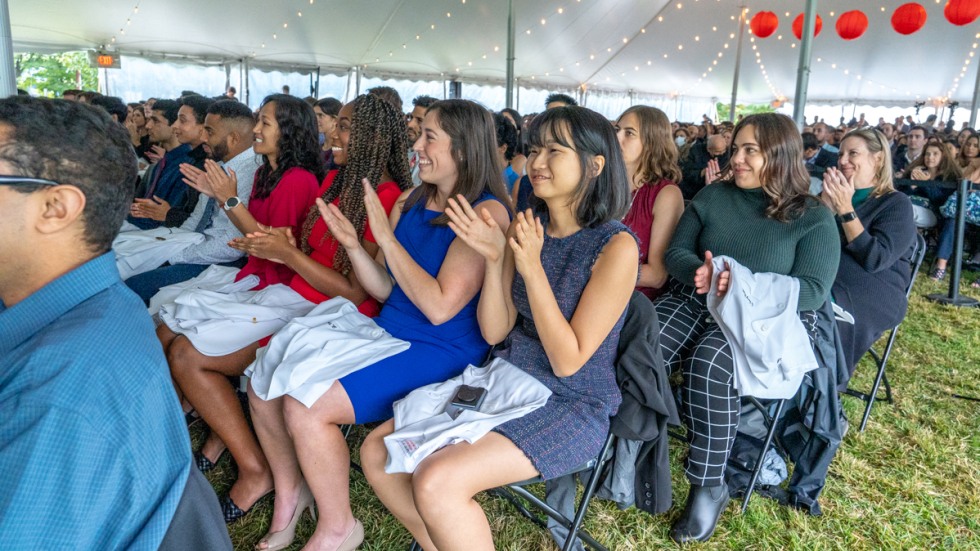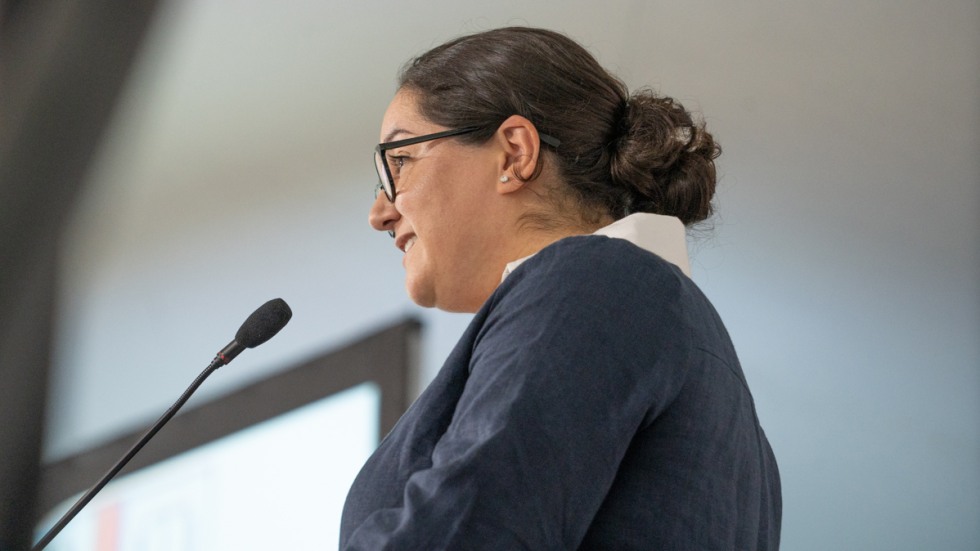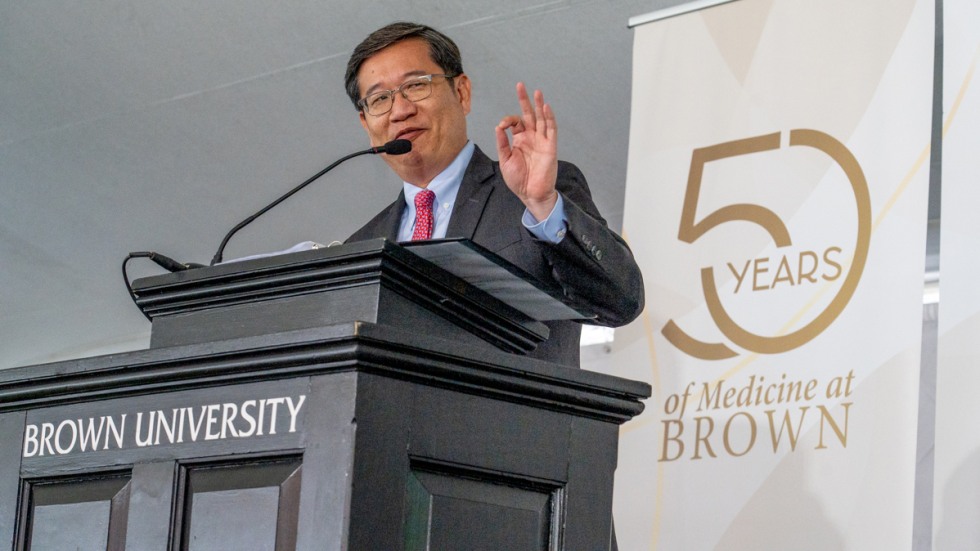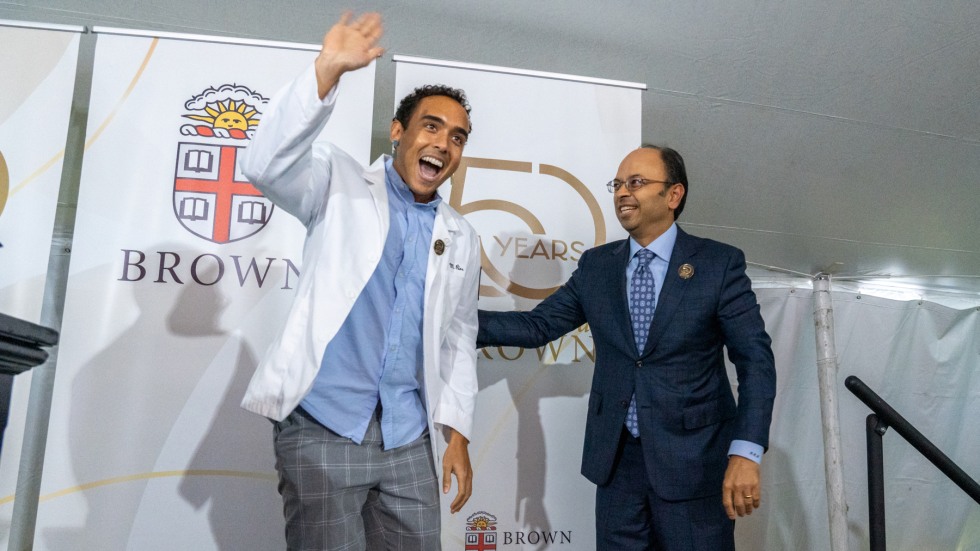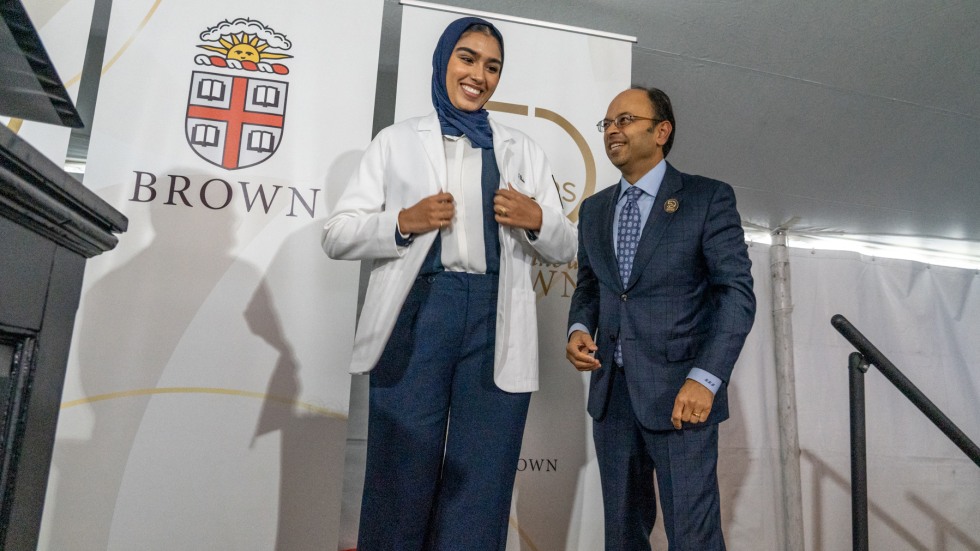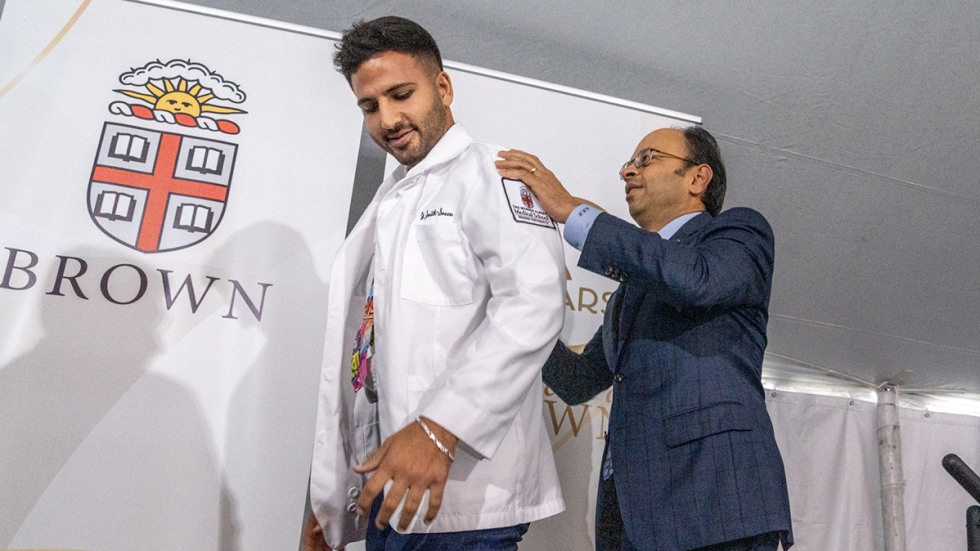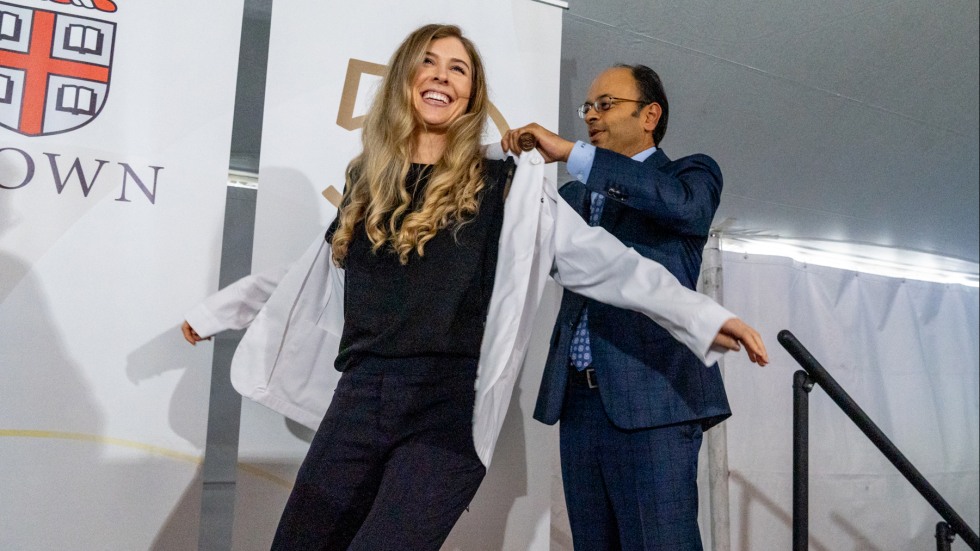PROVIDENCE, R.I. [Brown University] — While classes started at Brown’s Warren Alpert Medical School in August, a traditional rite of passage on the first weekend in October marked a kickoff to the medical school journeys of 144 future physicians.
The school’s white coat ceremony, formally known as the Ceremony of Commitment to Medicine, is a way to acknowledge the dedication that brought Brown’s newest medical students to Providence and to welcome them to the profession. It is a tradition in which students are “coated” by the dean, with coats donated by the Brown Medical Alumni Association. And because almost no one makes it to medical school without support from a larger community, the ceremony is a chance to express gratitude for students’ family members and others who helped them get to this point, and to acknowledge the path that lies ahead.
Dr. Roxanne Vrees, associate dean for student affairs at the Warren Alpert Medical School, said the donning of the white coat reminds students that all the study and practice they do is in service of their future patients. There are many significant moments in medical school, but she said that this one, celebrated just as the students are about to start interacting with standardized patients, holds particularly special meaning.
“It all becomes real in that moment,” said Vrees, who earned a bachelor’s degree and M.D. from Brown and cherishes the memories of her own white coat celebration in 2000. “It means so much not only to the students, but also to the family and other folks who are there for them.”
John Johnson, a member of the medical school’s Class of 2023, served as student speaker for the 24th annual ceremony, held on Saturday, Oct. 1. He recalled his white coat ceremony from three years ago, which he said felt like an ending as well as a beginning.
“Before you get into medical school, all you think about is getting into medical school,” Johnson said. “So when you actually do, you feel like you made it. The ceremony reminds you that you’re just at the beginning of another journey — you made it to the top of one mountain, but you realize that another one lies ahead.”
